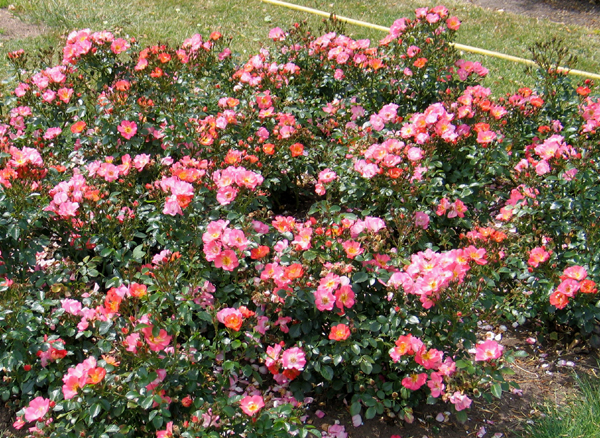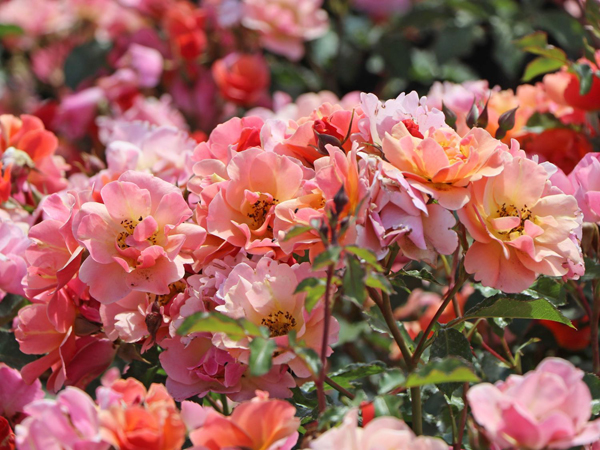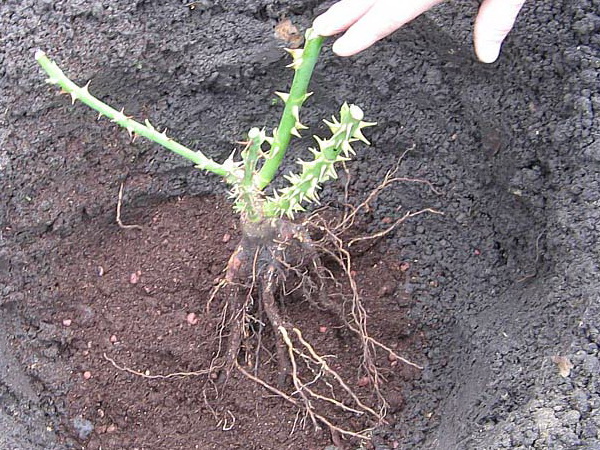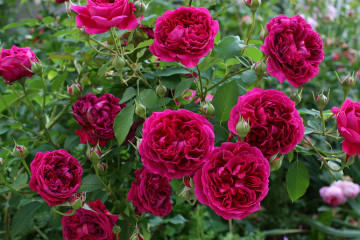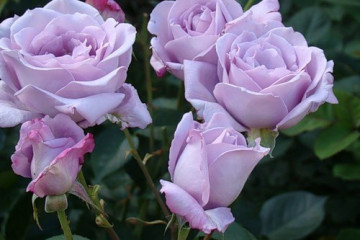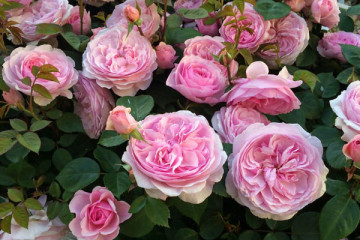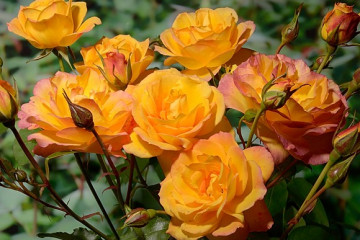Rose Jazz (Jazz) - characteristics of varietal shrub
Content:
Naheglut is considered the best climbing rose. Its amazing feature is to change the color of the petals during flowering. The breeders who bred this beauty compared the play of petals under the rays of the sun with the most delicate music. This determined the second name of the rose - That Jazz ("this is jazz"). The beauty of the variety is set off by other roses, suitable for decorating a rose garden, a flower arch. The pride of the novelty are five awards, including silver medals won at flower exhibitions in Italy, Spain, Germany.
From the history of the rose Jazz (Jazz)
The Jazz variety was created by the breeder G. Ivens only 15 years ago. Climbing rose Jazz was presented by "Tantau" nursery. Breeders give the following description of the variety:
- shoots of the variety are high, up to 1 m;
- the buds are collected in clusters of 5-6 flowers, the diameter of which is 3-4 cm;
- flower petals are velvety with patterned edges of a copper-apricot color with a pink tone. Gradually, the copper color disappears, the flower becomes apricot-pink, then the apricot disappears and only one remains - pink.
Flowering begins in spring and lasts until frost.
The benefits of a rose include:
- unpretentious care;
- disease resistance;
- perfectly tolerates severe winters;
- constant pruning is not required;
- flowers fall off on their own.
Despite its advantages, the variety has several disadvantages:
- partial pruning is necessary for the plant;
- thorny thorns make pruning difficult;
- the bush grows poorly in the shade;
- due to abundant flowering, the bush needs to be fed periodically.
Despite the shortcomings, many gardeners are happy to grow the Jazz rose.
Landing
Rose Jazz is unpretentious and feels great near the supports, around which clematis or other flowers of a contrasting color curl. Gardeners believe that it is better to plant the Jazz rose in late spring, when the soil is fully warmed up.
Step-by-step planting procedure
You can plant the bush yourself. Step-by-step instructions on how to do it correctly:
- Cut the roots of the seedling by 1 cm and soak in a root formation and growth stimulator.
- On the site, you need to dig a square hole (the size of the sides is 60 cm).
- It is necessary to prepare a soil mixture from garden soil, turf, sand, clay, peat, humus. You can add some ash and fertilizer (superphosphate).
- At the bottom of the hole, humus or bird droppings are poured in a thick layer.
- The seedling is placed in the hole so that the roots lie freely, if necessary, the hole expands.
- The stem of the rose is gradually thrown with earth (in a circle), the soil is compacted.
- The rose is earthed up, the near-trunk circle is filled with water and thrown with sawdust, dry bark.
For several days, the young plant is watered moderately so as not to cause rapid growth of aerial shoots, because the root system has not yet developed.
Care
To grow a powerful Jazz groundcover rose bush, the growing conditions must be observed.
- Watering. Once a week, the plant needs to be watered at the root, the procedure is best done in the early morning and with warm water. If the weather is dry, the amount of watering should be increased.
- Fertilizer. Climbing rose Jazz is a strongly growing culture, the flowering of which is continuous, therefore, regular feeding is needed, which is carried out according to the scheme: nitrogen fertilization - potassium and sodium preparations - phosphorus. Nitrogen applied in spring will cause shoot and foliage growth. The second feeding will affect the formation of buds, autumn fertilizers will help the rose survive the winter.
- Pruning. The rose needs spring pruning to remove dry shoots and shape the bush.
Reproduction
If you want to have several bushes of the beautiful Jazz in the garden, then in early March the plant needs to be rooted with shoots. This requires:
- Long shallow trenches are dug parallel to the bush.
- Straight shoots are selected.
- Shoots should be laid in trenches so that the outermost buds are on the ground.
- The branches are attached with pins and covered with earth.
With regular watering, a young seedling quickly grows roots. Next spring, the new bush can be separated from the adult plant and planted in a permanent place.
Curly rose Naheglut (That Jazz) is a variety that can decorate any garden, but for this you need to provide it with proper care (watering, loosening, feeding). The effort and time spent will surely pay off: the cascades of falling creamy apricot flowers are worthy of a painter's brush. Blossoming music Jazz cannot but cause admiration.
